Full text
PDF
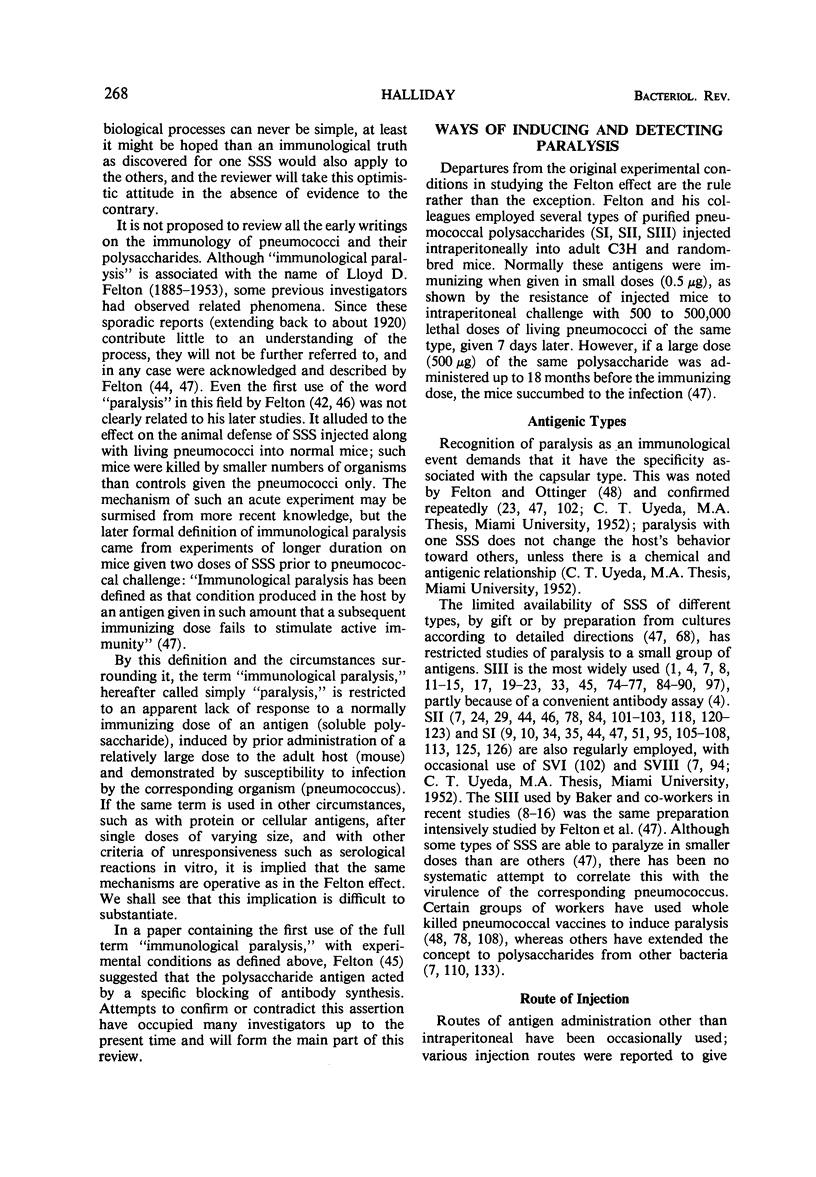



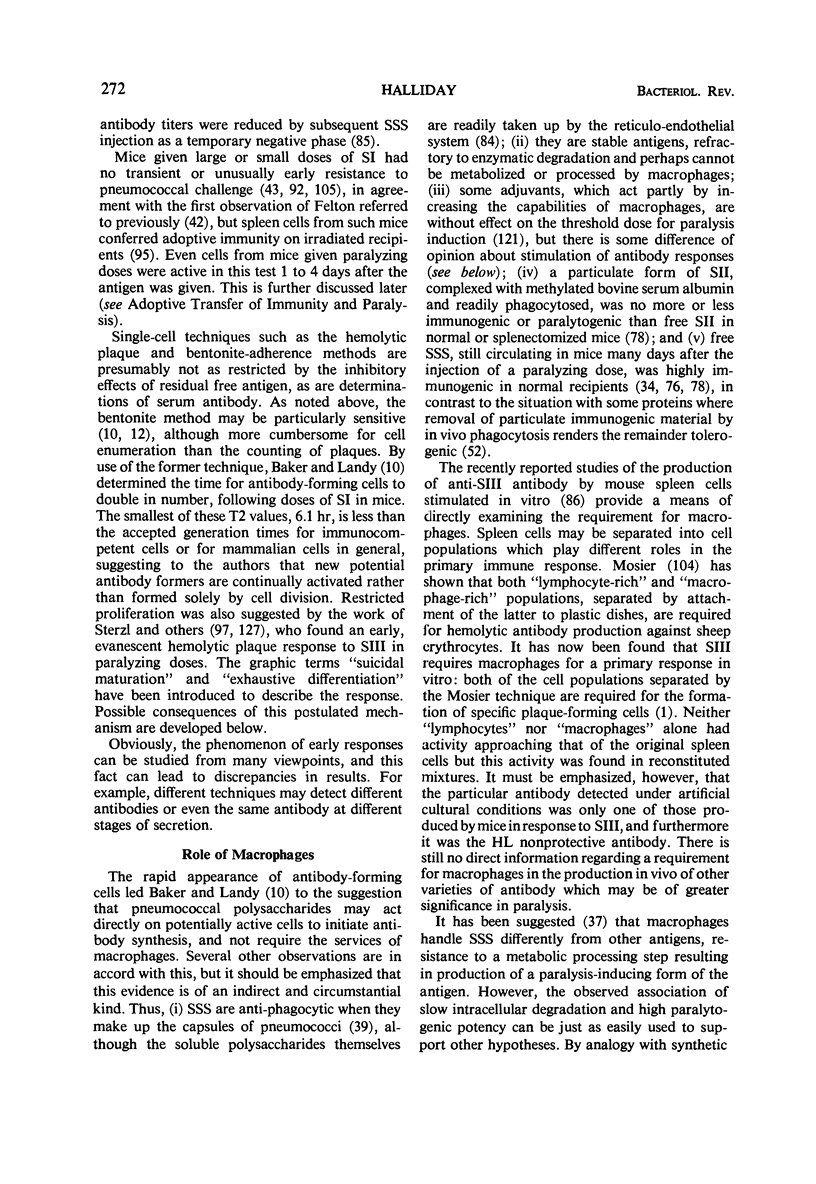



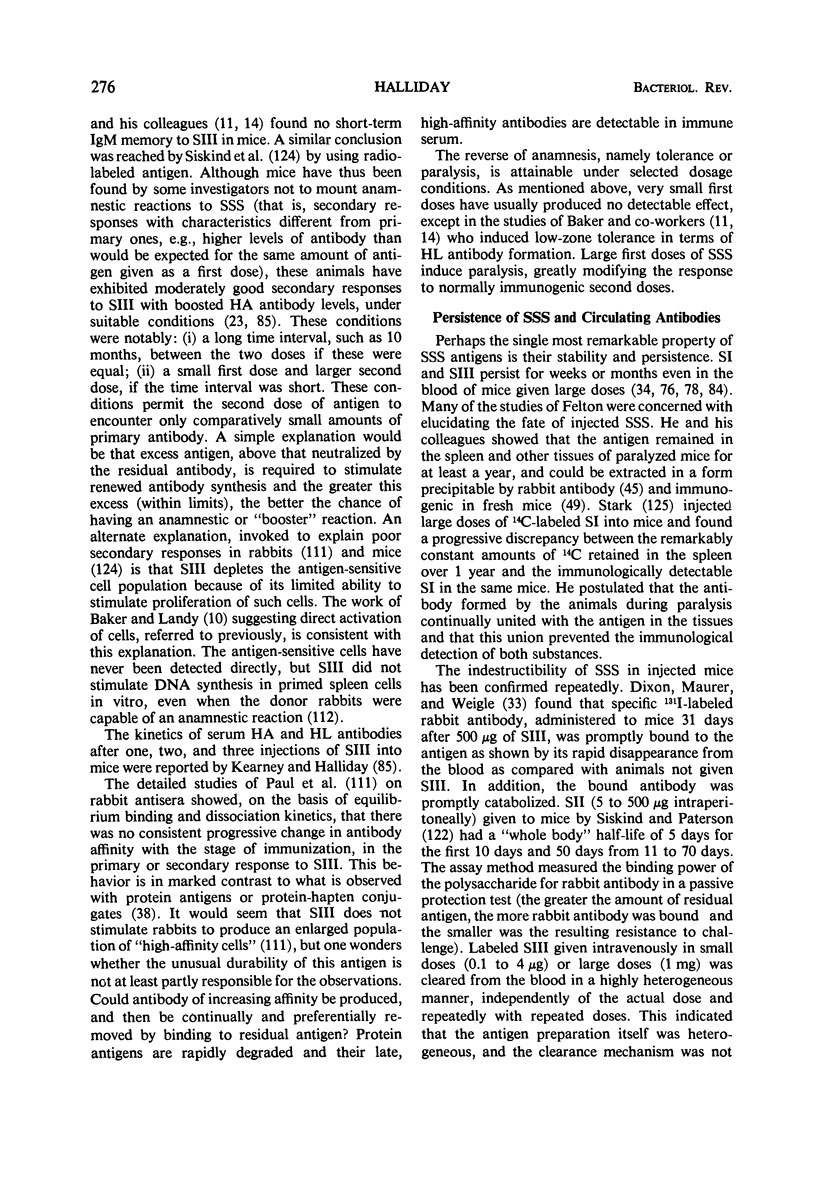

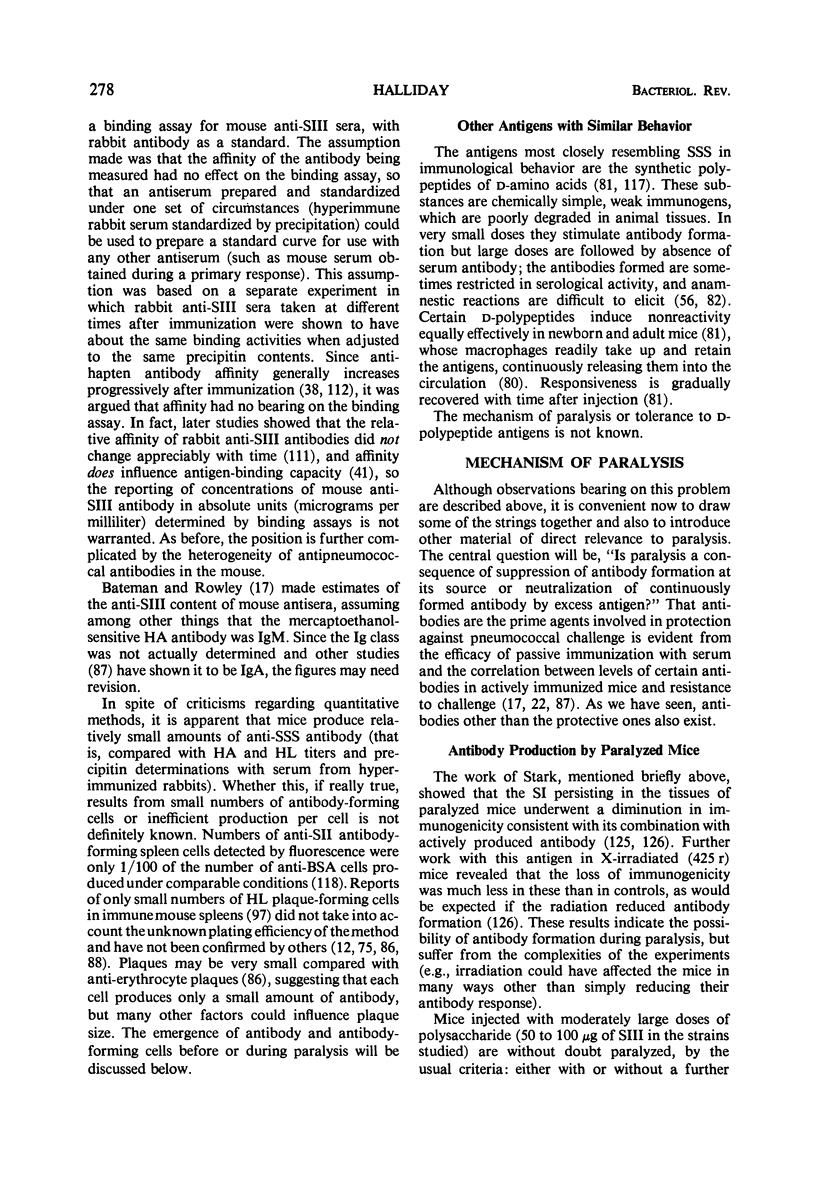
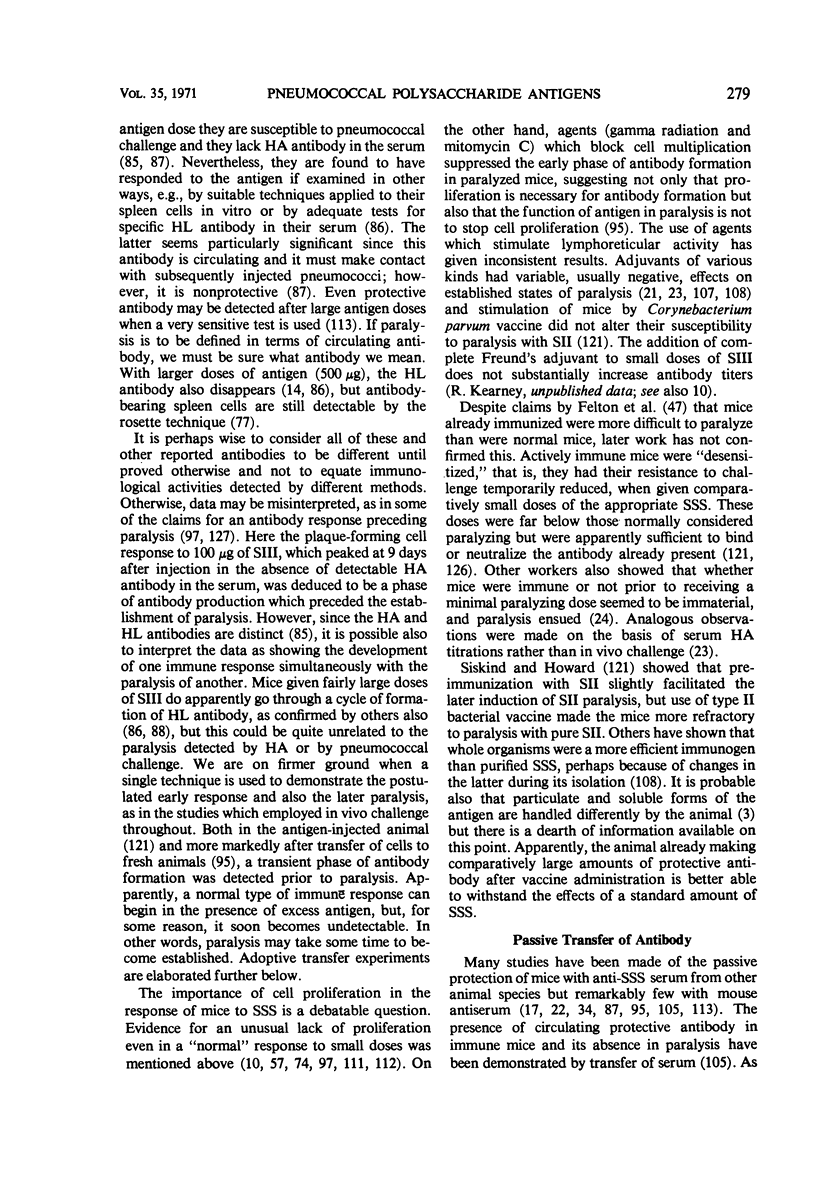
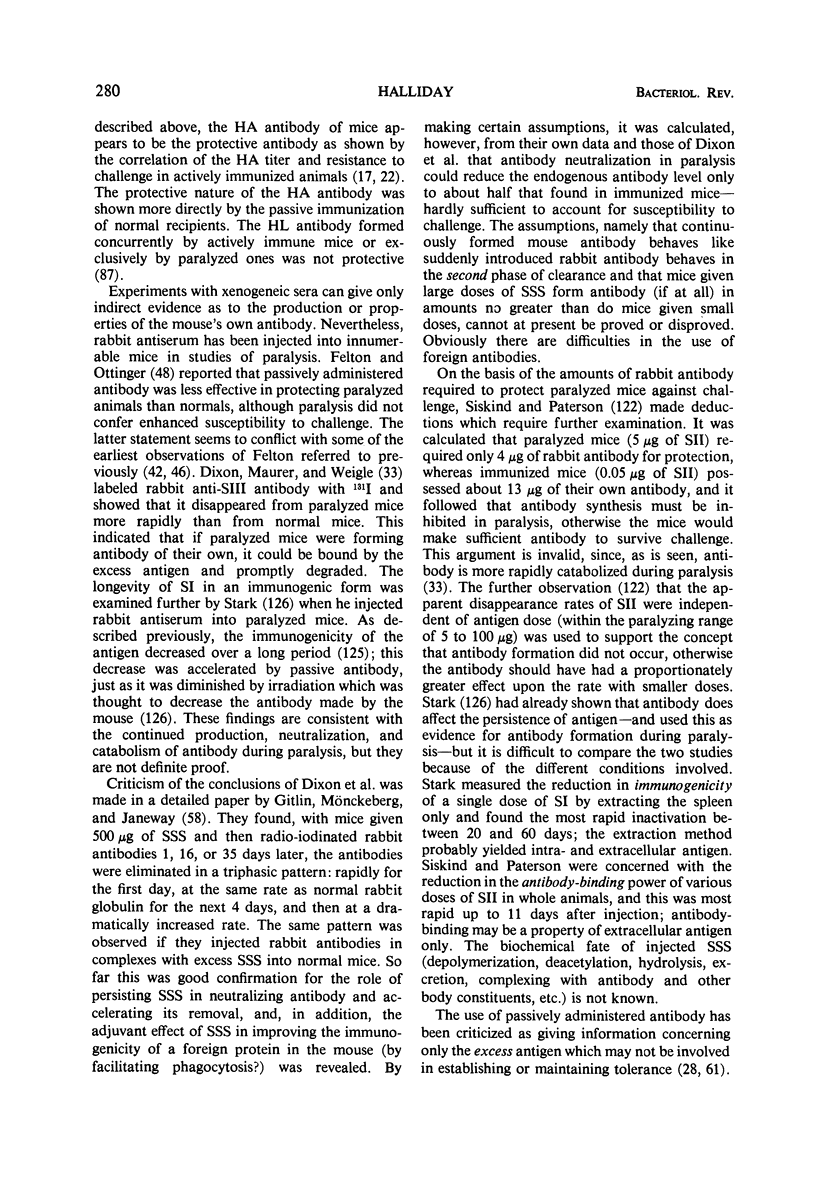
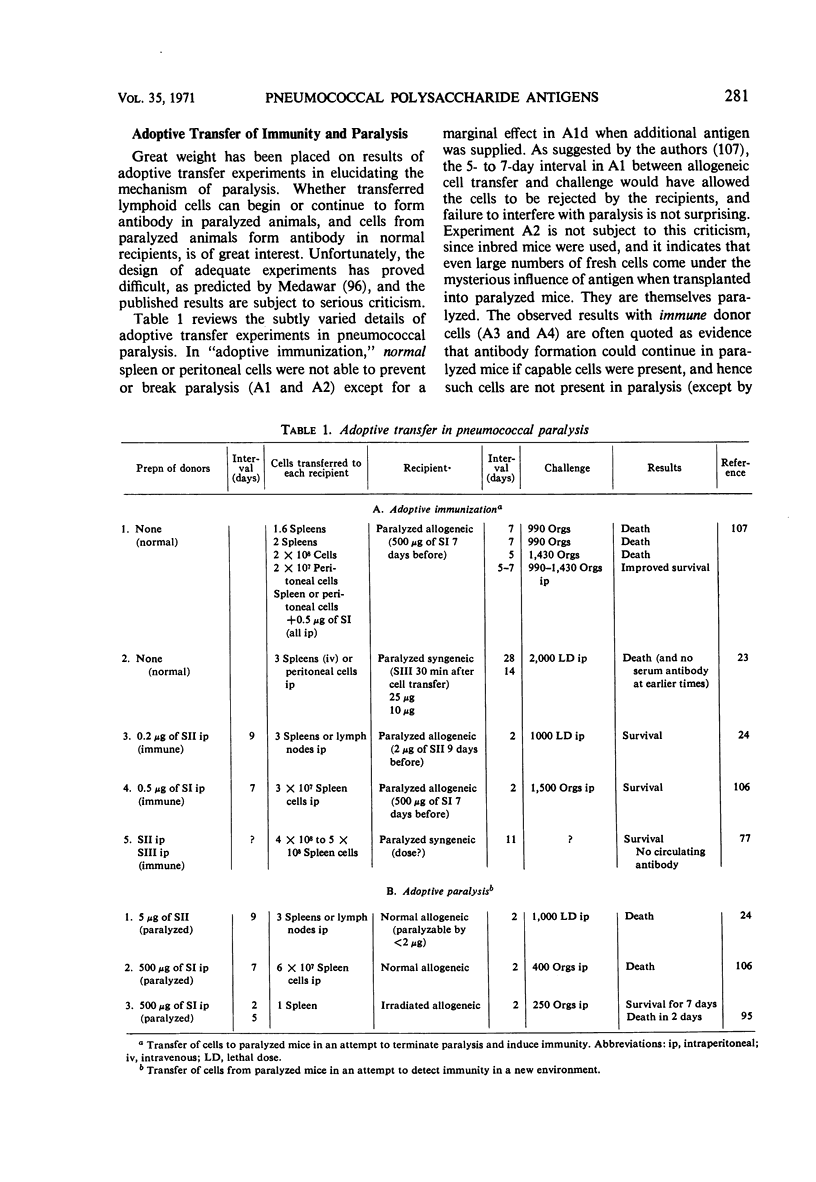

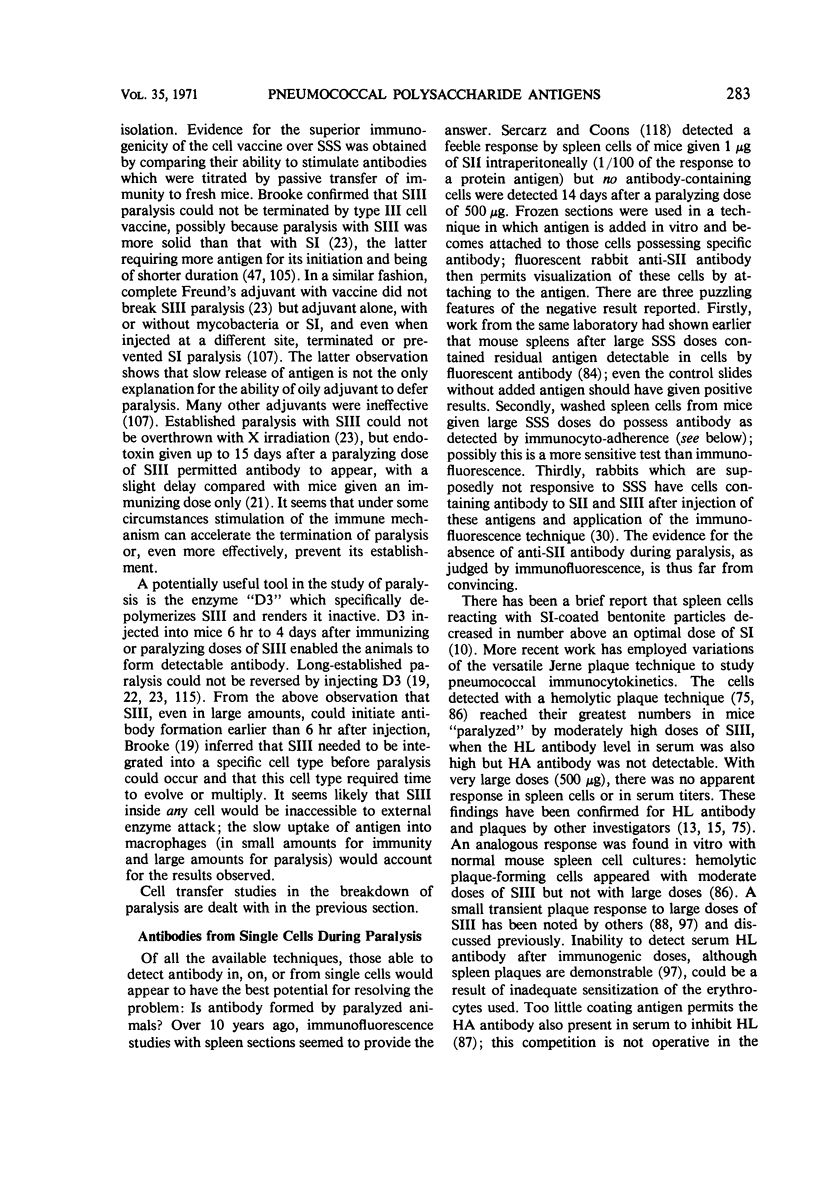

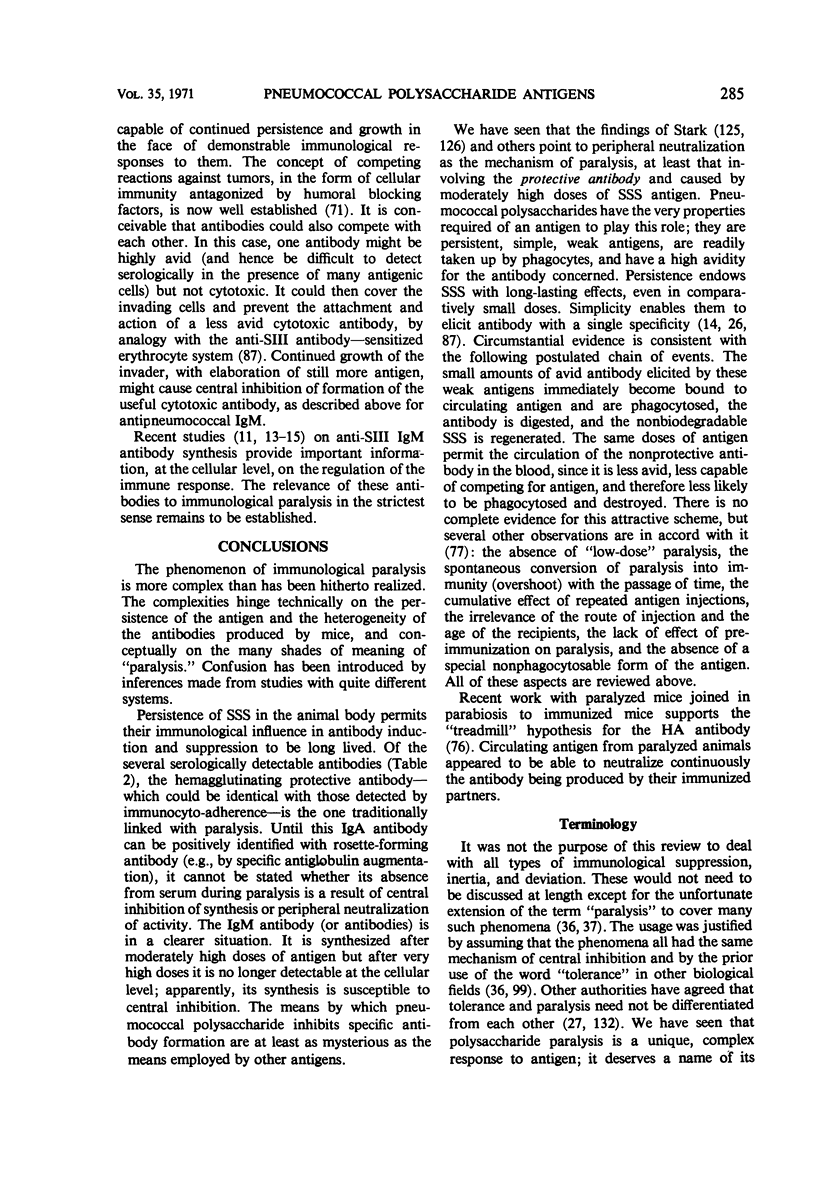


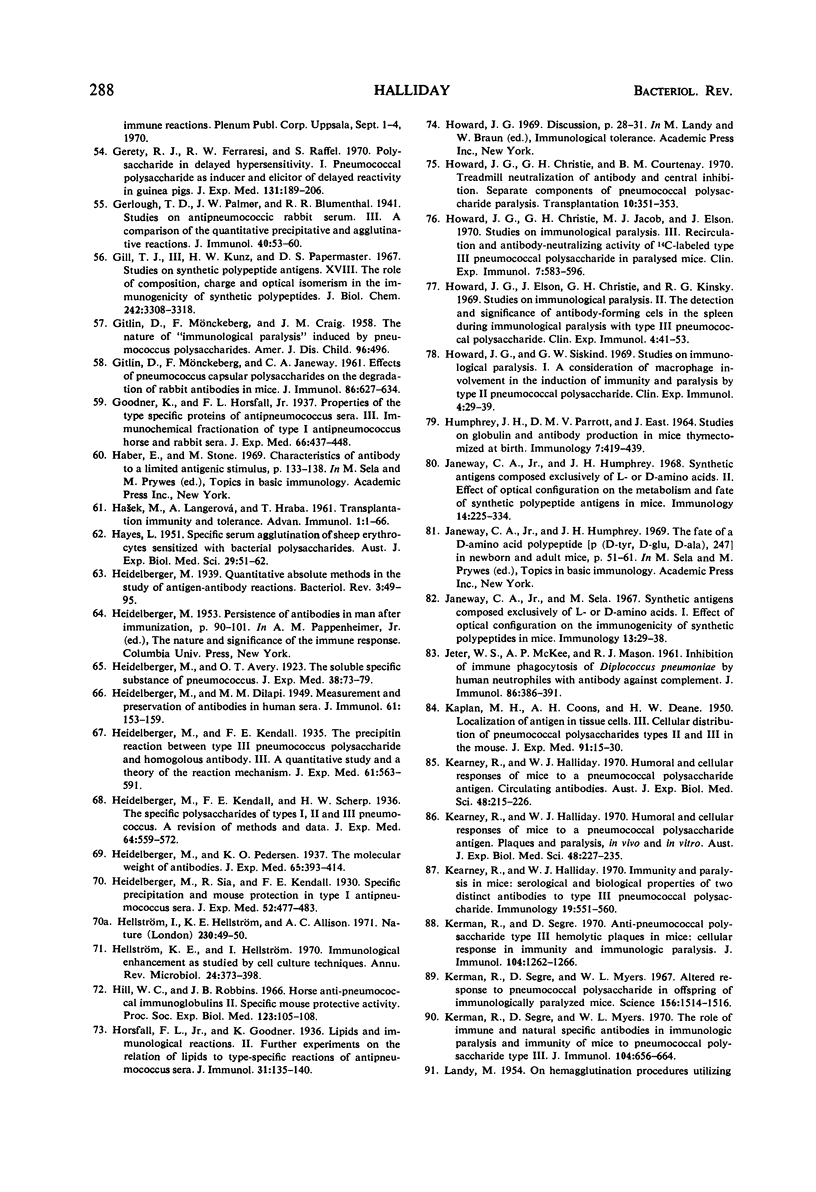

Selected References
These references are in PubMed. This may not be the complete list of references from this article.
- ASKONAS B. A., FARTHING C. P., HUMPHREY J. H. The significance of multiple antibody components in serum of immunized rabbits. Immunology. 1960 Oct;3:336–351. [PMC free article] [PubMed] [Google Scholar]
- Argyris B. F., Askonas B. A. Mouse peritoneal cells: their ability to elicit or produce antibody after exposure to antigen. Immunology. 1968 Mar;14(3):379–392. [PMC free article] [PubMed] [Google Scholar]
- BAER H., BRINGAZE J. K., McNAMEE M. The effect of the dose of bacterial polysaccharide antigen on antibody production in mice. J Bacteriol. 1954 Jan;67(1):123–124. doi: 10.1128/jb.67.1.123-124.1954. [DOI] [PMC free article] [PubMed] [Google Scholar]
- BIER O. Observations préliminaires sur l'hémagglutination, l'hémolyse et la conglutination passives. Ann Inst Pasteur (Paris) 1951 Dec;81(6):650–656. [PubMed] [Google Scholar]
- BROOKE M. S. BREAKING OF IMMUNOLOGICAL PARALYSIS BY INJECTION OF A SPECIFIC DEPOLYMERASE. Nature. 1964 Dec 26;204:1319–1320. doi: 10.1038/2041319a0. [DOI] [PubMed] [Google Scholar]
- BROOKE M. S. DECREASED SUSCEPTIBILITY TO IMMUNOLOGICAL PARALYSIS WITH INCREASED AGE. Transplantation. 1965 Jul;3:478–483. doi: 10.1097/00007890-196507000-00002. [DOI] [PubMed] [Google Scholar]
- Baker P. H., Stashak P. W. Quantitative and qualitative studies on the primary antibody response to pneumococcal polysaccharides at ehe cellular level. J Immunol. 1969 Dec;103(6):1342–1348. [PubMed] [Google Scholar]
- Baker P. J., Barth R. F., Stashak P. W., Amsbaugh D. F. Enhancement of the antibody response to type 3 pneumococcal polysaccharide in mice treated with antilymphocyte serum. J Immunol. 1970 May;104(5):1313–1315. [PubMed] [Google Scholar]
- Baker P. J., Bernstein M., Pasanen V., Landy M. Detection and enumeration of antibody-producing cells by specific adherence of antigen-coated bentonite particles. J Immunol. 1966 Dec;97(6):767–777. [PubMed] [Google Scholar]
- Baker P. J., Landy M. Brevity of the inductive phase in the immune response of mice to capsular polysaccharide antigens. J Immunol. 1967 Oct;99(4):687–694. [PubMed] [Google Scholar]
- Baker P. J., Stashak P. W., Amsbaugh D. F., Prescott B., Barth R. F. Evidence for the existence of two functionally distinct types of cells which regulate the antibody response to type 3 pneumococcal polysaccharide. J Immunol. 1970 Dec;105(6):1581–1583. [PubMed] [Google Scholar]
- Baker P. J., Stashak P. W., Amsbaugh D. F., Prescott B. Characterization of the antibody response to type 3 pneumococcal polysaccharide at the cellular level. I. Dose-response studies and the effect of prior immunization on the magnitude of the antibody response. Immunology. 1971 Apr;20(4):469–480. [PMC free article] [PubMed] [Google Scholar]
- Baker P. J., Stashak P. W., Amsbaugh D. F., Prescott B. Characterization of the antibody response to type 3 pneumococcal polysaccharide at the cellular level. II. Studies on the relative rate of antibody synthesis and release by antibody-producing cells. Immunology. 1971 Apr;20(4):481–492. [PMC free article] [PubMed] [Google Scholar]
- Baker P. J., Stashak P. W., Prescott B. Use of erythrocytes sensitized with purified pneumococcal polysaccharides for the assay of antibody and antibody-producing cells. Appl Microbiol. 1969 Mar;17(3):422–426. doi: 10.1128/am.17.3.422-426.1969. [DOI] [PMC free article] [PubMed] [Google Scholar]
- Bateman R. G., Rowley D. The natural resistance of pigeons to type 3 pneumococcus. Aust J Exp Biol Med Sci. 1969 Dec;47(6):733–745. doi: 10.1038/icb.1969.170. [DOI] [PubMed] [Google Scholar]
- Brooke M. S. A hemagglutination test and a specific depolymerase for studying immunologic paralysis in mice. J Immunol. 1966 Feb;96(2):358–363. [PubMed] [Google Scholar]
- Brooke M. S. Conversion of immunological paralysis to immunity by endotoxin. Nature. 1965 May 8;206(984):635–636. doi: 10.1038/206635a0. [DOI] [PubMed] [Google Scholar]
- Brooke M. S. Studies on the induction, specificity, prevention and breaking of immunologic paralysis and immunity to pneumococcal polysaccharide. J Immunol. 1966 Feb;96(2):364–372. [PubMed] [Google Scholar]
- COHN M. The problem of specific inhibition of antibody synthesis in adult animals by immunization of embryos. Ann N Y Acad Sci. 1957 Mar 22;64(5):859–876. doi: 10.1111/j.1749-6632.1957.tb52480.x. [DOI] [PubMed] [Google Scholar]
- Campbell J. H., Pappenheimer A. M., Jr Quantitative studies of the specificity of anti-pneumococcal polysaccharide antibodies, types 3 and 8. II. Inhibition of precipitin reactions with oligosaccharides isolated from hydrolysates of S3 and S8. Immunochemistry. 1966 May;3(3):213–222. doi: 10.1016/0019-2791(66)90185-6. [DOI] [PubMed] [Google Scholar]
- Catty D., Humphrey J. H., Gell P. G. The proportion of two b locus allotypic determinants in rabbit antisera raised against pneumococcal polysaccharide SSS 3 antigen. Immunology. 1969 Mar;16(3):409–422. [PMC free article] [PubMed] [Google Scholar]
- DIXON F. J., MAURER P. H., WEIGLE W. O. Immunologic activity of pneumococcal polysaccharide fixed in the tissues of the mouse. J Immunol. 1955 Mar;74(3):188–191. [PubMed] [Google Scholar]
- DRESSER D. W. Specific inhibition of antibody production. II. Paralysis induced in adult mice by small quantities of protein antigen. Immunology. 1962 May;5:378–388. [PMC free article] [PubMed] [Google Scholar]
- Davies A. J., Carter R. L., Leuchars E., Wallis V., Dietrich F. M. The morphology of immune reactions in normal, thymectomized and reconstituted mice. 3. Response to bacterial antigens: salmonellar flagellar antigen and pneumococcal plysaccharide. Immunology. 1970 Dec;19(6):945–957. [PMC free article] [PubMed] [Google Scholar]
- Diener E., Armstrong W. D. Immunological tolerance in vitro: kinetic studies at the cellular level. J Exp Med. 1969 Mar 1;129(3):591–603. doi: 10.1084/jem.129.3.591. [DOI] [PMC free article] [PubMed] [Google Scholar]
- Dresser D. W., Mitchison N. A. The mechanism of immunological paralysis. Adv Immunol. 1968;8:129–181. doi: 10.1016/s0065-2776(08)60466-6. [DOI] [PubMed] [Google Scholar]
- EISEN H. N., SISKIND G. W. VARIATIONS IN AFFINITIES OF ANTIBODIES DURING THE IMMUNE RESPONSE. Biochemistry. 1964 Jul;3:996–1008. doi: 10.1021/bi00895a027. [DOI] [PubMed] [Google Scholar]
- FAHEY J. L., HUMPHREY J. H. Antibodies with differing molecular sizes in mice. Immunology. 1962 Jan;5:104–109. [PMC free article] [PubMed] [Google Scholar]
- FARR R. S. A quantitative immunochemical measure of the primary interaction between I BSA and antibody. J Infect Dis. 1958 Nov-Dec;103(3):239–262. doi: 10.1093/infdis/103.3.239. [DOI] [PubMed] [Google Scholar]
- FELTON L. D., KAUFFMANN G., PRESCOTT B., OTTINGER B. Studies on the mechanism of the immunological paralysis induced in mice by pneumococcal polysaccharides. J Immunol. 1955 Jan;74(1):17–26. [PubMed] [Google Scholar]
- FELTON L. D., PRESCOTT B., KAUFFMANN G., OTTINGER B. Pneumococcal antigenic polysaccharide substances from animal tissues. J Immunol. 1955 Mar;74(3):205–213. [PubMed] [Google Scholar]
- FINK M. A., QUINN V. A. Antibody production in inbred strains of mice. J Immunol. 1953 Jan;70(1):61–67. [PubMed] [Google Scholar]
- FREI P. C., BENACERRAF B., THORBECKE G. J. PHAGOCYTOSIS OF THE ANTIGEN, A CRUCIAL STEP IN THE INDUCTION OF THE PRIMARY RESPONSE. Proc Natl Acad Sci U S A. 1965 Jan;53:20–23. doi: 10.1073/pnas.53.1.20. [DOI] [PMC free article] [PubMed] [Google Scholar]
- GITLIN D., MONCKEBERG F., JANEWAY C. A. Effects of pneumococcus capsular polysaccarides on the degradation of rabbit antibodies in mice. J Immunol. 1961 Jun;86:627–634. [PubMed] [Google Scholar]
- Gerety R. J., Ferraresi R. W., Raffel S. Polysaccharide in delayed hypersensitivity. I. Pneumococcal polysaccharide as inducer and elicitor of delayed reactivity in guinea pigs. J Exp Med. 1970 Jan 1;131(1):189–206. doi: 10.1084/jem.131.1.189. [DOI] [PMC free article] [PubMed] [Google Scholar]
- Gill T. J., 3rd, Kunz H. W., Papermaster D. S. Studies on synthetic polypeptide antigens. 18. The role of composition, charge, and optical isomerism in the immunogenicity of synthetic polypeptides. J Biol Chem. 1967 Jul 25;242(14):3308–3318. [PubMed] [Google Scholar]
- HAYES L. Specific serum agglutination of sheep erythrocytes sensitized with bacterial polysaccharides. Aust J Exp Biol Med Sci. 1951 Jan;29(1):51–62. doi: 10.1038/icb.1951.7. [DOI] [PubMed] [Google Scholar]
- HUMPHREY J. H., PARROTT D. M., EAST J. STUDIES ON GLOBULIN AND ANTIBODY PRODUCTION IN MICE THYMECTOMIZED AT BIRTH. Immunology. 1964 Jul;7:419–439. [PMC free article] [PubMed] [Google Scholar]
- Heidelberger M. QUANTITATIVE ABSOLUTE METHODS IN THE STUDY OF ANTIGEN-ANTIBODY REACTIONS. Bacteriol Rev. 1939 Jun;3(1):49–95. doi: 10.1128/br.3.1.49-95.1939. [DOI] [PMC free article] [PubMed] [Google Scholar]
- Hellström I., Hellström K. E., Allison A. C. Neonatally induced allograft tolerance may be mediated by serum-borne factors. Nature. 1971 Mar 5;230(5288):49–50. doi: 10.1038/230049a0. [DOI] [PubMed] [Google Scholar]
- Hellström K. E., Hellström I. Immunological enhancement as studied by cell culture techniques. Annu Rev Microbiol. 1970;24:373–398. doi: 10.1146/annurev.mi.24.100170.002105. [DOI] [PubMed] [Google Scholar]
- Hill W. C., Robbins J. B. Horse anti-pneumococcal immunoglobulins. II. Specific mouse protective activity. Proc Soc Exp Biol Med. 1966 Oct;123(1):105–108. doi: 10.3181/00379727-123-31414. [DOI] [PubMed] [Google Scholar]
- Howard J. G., Christie G. H., Jacob M. J., Elson J. Studies on immunological paralysis. 3. Recirculation and antibody-neutralizing activity of 14C-labelled type 3 pneumococcal polysaccharide in paralysed mice. Clin Exp Immunol. 1970 Oct;7(4):583–596. [PMC free article] [PubMed] [Google Scholar]
- Howard J. G., Elson J., Christie G. H., Kinsky R. G. Studies on immunological paralysis. II. The detection and significance of antibod-forming cells in the spleen during immunological paralysis with type 3 pneumococcal polysaccharide. Clin Exp Immunol. 1969 Jan;4(1):41–53. [PMC free article] [PubMed] [Google Scholar]
- Howard J. G., Siskind G. W. Studies on immunological paralysis. I. A consideration of macrophage involvement in the induction of paralysis and immunity by type II pneumococcal polysaccharide. Clin Exp Immunol. 1969 Jan;4(1):29–39. [PMC free article] [PubMed] [Google Scholar]
- JETER W. S., McKEE A. P., MASON R. J. Inhibition of immune phagocytosis of Diplococcus pneumoniae by human neutrophiles with antibody against complement. J Immunol. 1961 Apr;86:386–391. [PubMed] [Google Scholar]
- Janeway C. A., Jr, Humphrey J. H. Synthetic antigens composed exclusively of L- or D- amino acids. II. Effect of optical configuration on the metabolism and fate of synthetic polypeptide antigens in mice. Immunology. 1968 Feb;14(2):225–234. [PMC free article] [PubMed] [Google Scholar]
- Janeway C. A., Jr, Sela M. Synthetic antigens composed exclusively of L- or D-amino acids. I. Effect of optical configuration on the immunogenicity of synthetic polypeptides in mice. Immunology. 1967 Jul;13(1):29–38. [PMC free article] [PubMed] [Google Scholar]
- KAPLAN M. E., COONS A. H., DEANE H. W. Localization of antigen in tissue cells; cellular distribution of pneumococcal polysaccharides types II and III in the mouse. J Exp Med. 1950 Jan 1;91(1):15-30, 4 pl. doi: 10.1084/jem.91.1.15. [DOI] [PMC free article] [PubMed] [Google Scholar]
- Kearney R., Halliday W. J. Humoral and cellular responses of mice to a pneumococcal polysaccharide antigen. Circulating antibodies. Aust J Exp Biol Med Sci. 1970 Apr;48(2):215–226. doi: 10.1038/icb.1970.21. [DOI] [PubMed] [Google Scholar]
- Kearney R., Halliday W. J. Humoral and cellular responses of mice to a pneumococcal polysaccharide antigen. Plaques and paralysis, in vivo and in vitro. Aust J Exp Biol Med Sci. 1970 Apr;48(2):227–235. doi: 10.1038/icb.1970.22. [DOI] [PubMed] [Google Scholar]
- Kearney R., Halliday W. J. Immunity and paralysis in mice. Serological and biological properties of two distinct antibodies to type III pneumococcal polysaccharide. Immunology. 1970 Oct;19(4):551–560. [PMC free article] [PubMed] [Google Scholar]
- Kerman R., Segre D. Anti-pneumococcal polysaccharide type 3 hemolytic plaques in mice: cellular response in immunity and immunologic paralysis. J Immunol. 1970 May;104(5):1262–1266. [PubMed] [Google Scholar]
- Kerman R., Segre D., Myers W. L. Altered response to pneumococcal polysaccharide in offspring of immunologically paralyzed mice. Science. 1967 Jun 16;156(3781):1514–1516. doi: 10.1126/science.156.3781.1514. [DOI] [PubMed] [Google Scholar]
- Kerman R., Segre D., Myers W. L. The role of immune and natural specific antibodies in immunologic paralysis and immunity of mice to pneumococcal polysaccharide type 3. J Immunol. 1970 Mar;104(3):656–664. [PubMed] [Google Scholar]
- LANDY M. On hemagglutination procedures utilizing isolated polysaccharide and protein antigens. Am J Public Health Nations Health. 1954 Aug;44(8):1059–1064. doi: 10.2105/ajph.44.8.1059. [DOI] [PMC free article] [PubMed] [Google Scholar]
- MITCHISON N. A. Tolerance of erythrocytes in poultry:induction and specificity. Immunology. 1962 May;5:341–358. [PMC free article] [PubMed] [Google Scholar]
- MORGAN P., WATSON D. W., CROMARTIE W. J. Immunization of rabbits with type II pneumococcal polysaccharide. Proc Soc Exp Biol Med. 1952 Jul;80(3):512–516. doi: 10.3181/00379727-80-19675. [DOI] [PubMed] [Google Scholar]
- MORGAN P., WATSON D. W., CROMARTIE W. J. The immunization of rabbits with soluble type-specific substances derived from Pneumococci grown in vivo. J Infect Dis. 1957 Nov-Dec;101(3):224–232. doi: 10.1093/infdis/101.3.224. [DOI] [PubMed] [Google Scholar]
- MORGAN P., WATSON D. W., CROMARTIE W. J. Type-specificity of immunological paralysis induced in mice with pneumococcal type II polysaccharide. J Bacteriol. 1953 Feb;65(2):224–225. doi: 10.1128/jb.65.2.224-225.1953. [DOI] [PMC free article] [PubMed] [Google Scholar]
- Mackaness G. B., Blanden R. V. Cellular immunity. Prog Allergy. 1967;11:89–140. [PubMed] [Google Scholar]
- Matangkasombut P., Seastone C. V. Sequence of events in mice early in immunologic paralysis by pneumococcal polysaccharide. J Immunol. 1968 Apr;100(4):845–850. [PubMed] [Google Scholar]
- Medlín J., Ríha I., Sterzl J. The antibody response preceding immunological paralysis. Folia Biol (Praha) 1969;15(4):309–312. [PubMed] [Google Scholar]
- Mosier D. E. A requirement for two cell types for antibody formation in vitro. Science. 1967 Dec 22;158(3808):1573–1575. doi: 10.1126/science.158.3808.1573. [DOI] [PubMed] [Google Scholar]
- NEEPER C. A. MECHANISMS OF IMMUNOLOGIC PARALYSIS BY PNEUMOCOCCAL POLYSACCHARIDE. 3. IMMUNOLOGIC PARALYSIS IN RELATION TO MATURATION OF THE IMMUNOLOGIC RESPONSE OF MICE. J Immunol. 1964 Nov;93:860–866. [PubMed] [Google Scholar]
- NEEPER C. A., SEASTONE C. V. MECHANISMS OF IMMUNOLOGIC PARALYSIS BY PNEUMOCOCCAL POLYSACCHARIDE. I. STUDIES OF ADOPTIVELY ACQUIRED IMMUNITY TO PNEUMOCOCCAL INFECTION IN IMMUNOLOGICALLY PARALYZED AND NORMAL MICE. J Immunol. 1963 Sep;91:374–377. [PubMed] [Google Scholar]
- NEEPER C. A., SEASTONE C. V. MECHANISMS OF IMMUNOLOGIC PARALYSIS BY PNEUMOCOCCAL POLYSACCHARIDE. II. THE INFLUENCE OF NONSPECIFIC FACTORS ON THE IMMUNITY OF PARALYZED MICE TO PNEUMOCOCCAL INFECTION. J Immunol. 1963 Sep;91:378–383. [PubMed] [Google Scholar]
- NEEPER C. A., SEASTONE C. V. MECHANISMS OF IMMUNOLOGIC PARALYSIS BY PNEUMOCOCCAL POLYSACCHARIDE. IV. COMPARISON OF POLYSACCHARIDE AND WHOLE ORGANISMS. J Immunol. 1964 Nov;93:867–871. [PubMed] [Google Scholar]
- ORSKOV I. Immunological paralysis induced in rabbits by a heavily capsulated Klebsiella strain. Acta Pathol Microbiol Scand. 1956;38(5):375–384. [PubMed] [Google Scholar]
- Paul W. E., Benacerraf B., Siskind G. W., Goidl D. A., Reisfeld R. A. The anamnestic antibody response to type 3 specific pneumococcal polysaccharide. J Exp Med. 1969 Jul 1;130(1):77–89. doi: 10.1084/jem.130.1.77. [DOI] [PMC free article] [PubMed] [Google Scholar]
- Paul W. E., Siskind G. W., Benacerraf B., Ovary Z. Secondary antibody responses in haptenic systems: cell population selection by antigen. J Immunol. 1967 Oct;99(4):760–770. [PubMed] [Google Scholar]
- Pike R. M. Antibody heterogeneity and serological reactions. Bacteriol Rev. 1967 Jun;31(2):157–174. doi: 10.1128/br.31.2.157-174.1967. [DOI] [PMC free article] [PubMed] [Google Scholar]
- SCHMIDT M. H., WOLFE H. R. Precipitin production in chickens. IX. A quantitative study of the antibody response to nine different purified substances. J Immunol. 1953 Oct;71(4):214–219. [PubMed] [Google Scholar]
- SERCARZ E., COONS A. H. Specific inhibition of antibody formation during immunological paralysis and unresponsiveness. Nature. 1959 Oct 3;184(Suppl 14):1080–1082. doi: 10.1038/1841080a0. [DOI] [PubMed] [Google Scholar]
- SISKIND G. W., PATERSON P. Y. A BIOASSAY FOR ESTIMATION OF PNEUMOCOCCAL POLYSACCHARIDE IN UNRESPONSIVE (PARALYZED) MICE. J Immunol. 1964 Sep;93:489–494. [PubMed] [Google Scholar]
- SISKIND G. W., PATERSON P. Y., THOMAS L. INDUCTION OF UNRESPONSIVENESS AND IMMUNITY IN NEWBORN AND ADULT MICE WITH PNEUMOCOCCAL POLYSACCHARIDE. J Immunol. 1963 Jun;90:929–934. [PubMed] [Google Scholar]
- STARK O. K. Studies on pneumococcal polysaccharide. II. Mechanism involved in production of immunological paralysis by type I pneumococcal polysaccharide. J Immunol. 1955 Feb;74(2):130–133. [PubMed] [Google Scholar]
- Sela M. Immunological studies with synthetic polypeptides. Adv Immunol. 1966;5:29–129. doi: 10.1016/s0065-2776(08)60272-2. [DOI] [PubMed] [Google Scholar]
- Shellam G. R., Nossal G. J. Mechanism of induction of immunological tolerance. IV. The effects of ultra-low doses of flagellin. Immunology. 1968 Feb;14(2):273–284. [PMC free article] [PubMed] [Google Scholar]
- Siskind G. W., Howard J. G. Studies on the induction of immunological unresponsiveness to pneumococcal polysaccharide in mice. J Exp Med. 1966 Sep 1;124(3):417–429. doi: 10.1084/jem.124.3.417. [DOI] [PMC free article] [PubMed] [Google Scholar]
- TURK J. L., HEATHER C. J. A HISTOLOGICAL STUDY OF LYMPH NODES DURING THE DEVELOPMENT OF DELAYED HYPERSENSITIVITY TO SOLUBLE ANTIGENS. Int Arch Allergy Appl Immunol. 1965;27:199–212. doi: 10.1159/000229612. [DOI] [PubMed] [Google Scholar]
- Wu W. G., Trice K. L. Influence of cellular factors on immune unresponsiveness induced by Klebsiella pneumoniae capsular antigen. J Bacteriol. 1967 Oct;94(4):896–901. doi: 10.1128/jb.94.4.896-901.1967. [DOI] [PMC free article] [PubMed] [Google Scholar]


